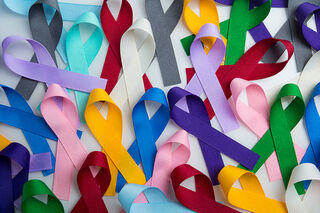Health
Navigating Life After Cancer
Helpful tips for the next part of your cancer journey.
Posted November 12, 2022 Reviewed by Gary Drevitch
Key points
- Fatigue is a common side effect of cancer treatment. Moderate exercise can help combat fatigue.
- It takes time to heal after cancer treatment which can be frustrating. Be kind to yourself and set boundaries for others.
- Check in with your primary care physician to get back on track with your overall health.

Welcome to a series of posts focusing on cancer survivorship. Cancer survivorship starts at diagnosis, so if you have heard those life-changing words—“You have cancer"—this is the right place for you.
This series will address the most frequent questions I hear from patients as they transition from illness to wellness. There is no fixed rule on when someone becomes a survivor; in fact, innovations in technology and treatment are leading many patients to live with cancer even if they cannot be cured. This checklist may be a helpful resource as you transition to survivorship.
When will I feel normal?
You may be feeling the cumulative effects of the past months or even years of treatment, including a surprising amount of fatigue. Your family and friends may be ready to celebrate when you may just feel like a nap. As you begin to heal, it is normal to feel even more tired than you felt during treatment. Considering everything your amazing body has just carried you through, it’s not surprising that it may take weeks or months for your energy to return.
Loss of endurance and muscle mass can contribute to feelings of fatigue after treatment. The American College of Sports Medicine recommends 30 minutes, 3 times per week of moderate exercise combined with 2 times per week of resistance training for cancer survivors to combat common symptoms like fatigue and to improve quality of life. Talk to your treatment team about the right time to start moving your body.
In addition to fatigue, other symptoms may continue after treatment is over. Most of these side effects will improve in the weeks to months after treatment. I tell patients that they can expect to be 80% back to normal within 1-2 months after treatment. The final part of recovery, however, can take 6 months to even years. Sometimes, as frustrating as it is to hear, it just takes time.
Setting boundaries is the key to recovery
As this healing is happening, hopefully you are starting to look and feel more normal. As you heal, consider what is important to you: If you have limited energy, what do you want to use it on? What people or activities fill you up and which bring you down? Without considering these questions, you may overdo it and end up overcommitted and exhausted. Set boundaries and expectations with friends, family, and co-workers and enlist their help in keeping them. Your outside may look normal, but the microscopic internal damage is just beginning to heal.
Now is the time to check in with your primary care physician
Spending less time with your oncology team also means that it is time to check in with your primary-care physician. Important health maintenance items like vaccinations, high blood pressure control, or other cancer screenings may have been delayed due to your treatment. Make an appointment with your primary-care physician to discuss your overall health and to develop a plan for catching up. Your primary-care provider can also be an important source of support as you move back into the “normal” flow of life.
Cancer survivorship is the longest part of the cancer journey. Acknowledging that recovery will take time, setting boundaries, moving your body, and making an appointment with your primary- care physician are four important steps in returning to normal.


